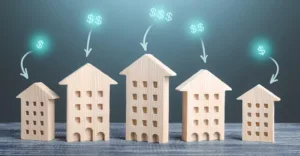Properties appreciate in different ways. Some gain value because the owner makes changes, like renovations or raising rents. That’s called forced appreciation. Others grow in value without much interference at all, and that’s passive appreciation.
For many investors, passive appreciation is especially appealing. It means you can hold onto a property and see gains without constantly pouring money back into the property. But not all property types are equal when it comes to natural appreciation.
So, which properties will naturally appreciate the most?
Hot Property Types
Sometimes the market gets excited about certain kinds of properties. That demand alone can drive values higher.
Car washes and self-storage are two clear examples. Both have been popular with investors lately, which has pushed prices up. If you own one, you might not even need to hold it long to see growth. You could sell it after only a few years and capture appreciation simply because the buyer pool is larger and more competitive.
It doesn’t last forever, of course. What’s “hot” today might not be in demand tomorrow. But in the moment, hot property types can appreciate quickly just by riding the wave of interest.
Strong Tenant Mix
Another thing that supports appreciation is tenant diversification. A building with many tenants spreads risk out.
Picture a retail strip with ten smaller tenants, compared to a shopping plaza with just three large tenants. If one tenant leaves in the first example, nine are still paying rent. That keeps income steady and reassures buyers about long-term performance. Losing 10% of your rental income is usually tolerable. In the second example, however, losing one tenant is a much bigger deal. The vacancy drags down income by 33% and makes the property much less attractive.
Appreciation often ties directly to income stability. More tenants generally means a steadier property and stronger appreciation over time.
Specialization
Specialized buildings can create problems for appreciation. Medical office space shows why.
Years ago, there were plenty of small practices in suburban and rural markets. But many of those practices have now consolidated into larger groups in centralized locations. That shift, coupled with changes in technology and standards, has left many older medical properties empty or struggling to find new use without a complete overhaul.
If a property is too tailored to one kind of tenant, it can lose value when that tenant leaves. More generic or flexible properties tend to appreciate better because they’re easier to re-lease and adapt as needs change.
Standing the Test of Time
Sometimes the best way to judge appreciation is to look back 50 years. It’s 2025, so 50 years ago was 1975. What kinds of properties are still as relevant today as they were in 1975?
Single-family homes are one such property type. People are still living in houses that were built 50 years ago (or longer), and those same homes are often worth even more today than they were in 1975. Farmland is another example. People will always need food, and farmland has proven to be one of the most steadily appreciating property types.
Government-leased properties also stand out for natural appreciation, such as a post office. The government is slow to move, which means long-term occupancy with a government-backed lease. That translates to stable value.
Apartments generally appreciate too, though they can require updates to keep pace with tenant expectations. Still, they remain a strong choice for long-term growth.
Conclusion
If you want a property that will appreciate naturally, look for one that has broad use, strong tenant diversification, and proven staying power. Hot property types can bring quick gains, but the long-term winners are usually the ones that people rely on decade after decade. Homes, apartments, farmland, and government buildings all fall into that category, and they show why picking the right property type matters as much as the timing of the deal.





